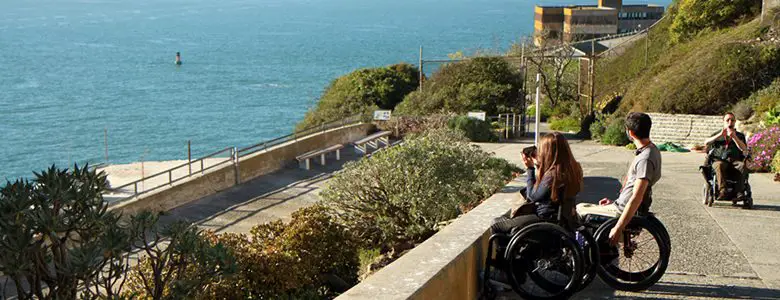
Lonely Planet publishes accessible travel resources
We at Lonely Planet believe that travel is for all, no matter what someone’s abilities or limitations are. We also know that the first barrier to travel for many people who have access issues or a disability is a lack of information about accessible travel, combined with a fear of the unknown.
That’s why we have created a new collection of online resources in the hopes that they will go some way towards filling the information gap and alleviating unfounded fears. The guides provide information and introduce a host of people who haven’t let their disability get in the way of their love of travel.
Everybody does it: you come across a website, think; “Oh, that’s interesting!” and bookmark it for future reference. But when surfing the web, subscribing to relevant online magazines and networking via social media become a core part of your job – as they have for me since I became Lonely Planet’s Accessible Travel Manager – things can easily get out of hand! Over a period of about 18 months my list of bookmarks grew and grew, with no organising principle other than the date on which each page was bookmarked.
Meanwhile, after an enforced leave of absence from a Masters in Communications course following my accident, I decided to re-enroll. Here’s where I was handed a free gift – I started a subject called Professional Practice, which essentially allowed me to choose to do a work-related project and at the same time as learning!
It was an ideal opportunity to do something that I had not had time to do – go through my long list of accessible-travel-related bookmarks to assess and categorise them. I also took the opportunity to go through my LinkedIn and Twitter connections, tracking down useful websites for travelling with access issues. I then surfed the web in a fairly concerted manner and came up with heaps more useful websites.
Of course, there was a time limit on how much I could do before my final assignment was due, but there was no time limit on how much I could build on that base. In the end, it was hard to know when to stop, but I knew that a long list of websites in a Word document on my hard drive was of no more use to the world than a list of bookmarks in my web browser. So when the list had probably doubled in size from what I had handed in for my assignment, I put a cap on it.
Here is where working for a publisher such as Lonely Planet comes in handy. I simply asked the Design Manager to assign me a designer that could help me make the document more presentable.. I also asked the Publishing Director to assign me a proofreader to weed out any errors, particularly since I had used voice-activated software where things can go horribly wrong without you even realising it!
The result is the largest list of online resources for accessible travel that exists. It’s still by no means exhaustive. I’m sure there will be some people who will wonder at glaring omissions, others who will be upset that their website or business has not been included, and those who know of really useful websites that I didn’t come across.
[masterslider id=”2″]I’m particularly aware that this is quite Anglo-centric, and also reflects my personal experience and knowledge, with countries such as Australia, the UK and the USA being overrepresented. But I’m pretty happy with what I did manage to fit in:
- Country-by-country resources from national and local government and tourism bodies, as well as disabled people’s organisations.
- A wealth of experience of travelling with a disability from almost 50 personal travel blogs.
- Dozens of specialised accessible travel agents and tour operators from 40 countries around the world.
- My own top travel tips for travelling with access issues.
- Advice from experienced travellers with a disability.
- Leads and links to disability-specific advice and support.
- Websites dedicated to the theory and promotion of accessible travel.
Knowing how quickly lists such as this become out of date, with websites appearing and disappearing all the time, I’m planning to update this resource every six months. I’m hoping a lot of readers will contact me with details of websites that can be included in subsequent editions, particularly in non-English-speaking countries.
With webpages being so easy to translate with a right click of the mouse, it would be great to increase the number of non-English-language resources. My goal is for this to become an ever-growing and ever-more-useful resource for travellers who have access issues, whether through congenital disability, injury or age.
If you have any new websites for me, please drop me a line at travelforall@lonelyplanet.com.au.
In closing, I’d like to thank Ivor Ambrose of the European Network for Accessible Tourism (ENAT), with whom Lonely Planet signed a memorandum of understanding last year to pursue joint projects. This is the first! Ivor provided valuable feedback and also made sure that there are fewer glaring omissions than there would have been without his knowledgeable input.
By Martin Heng
You can download the free Lonely Planet accessible travel resource on the Lonely Planet website.
We’d love to hear about your travels. Get in touch by messaging us on Facebook, tweeting us @DHorizons, emailing us at editor@disabilityhorizons.com or leaving your comments below.